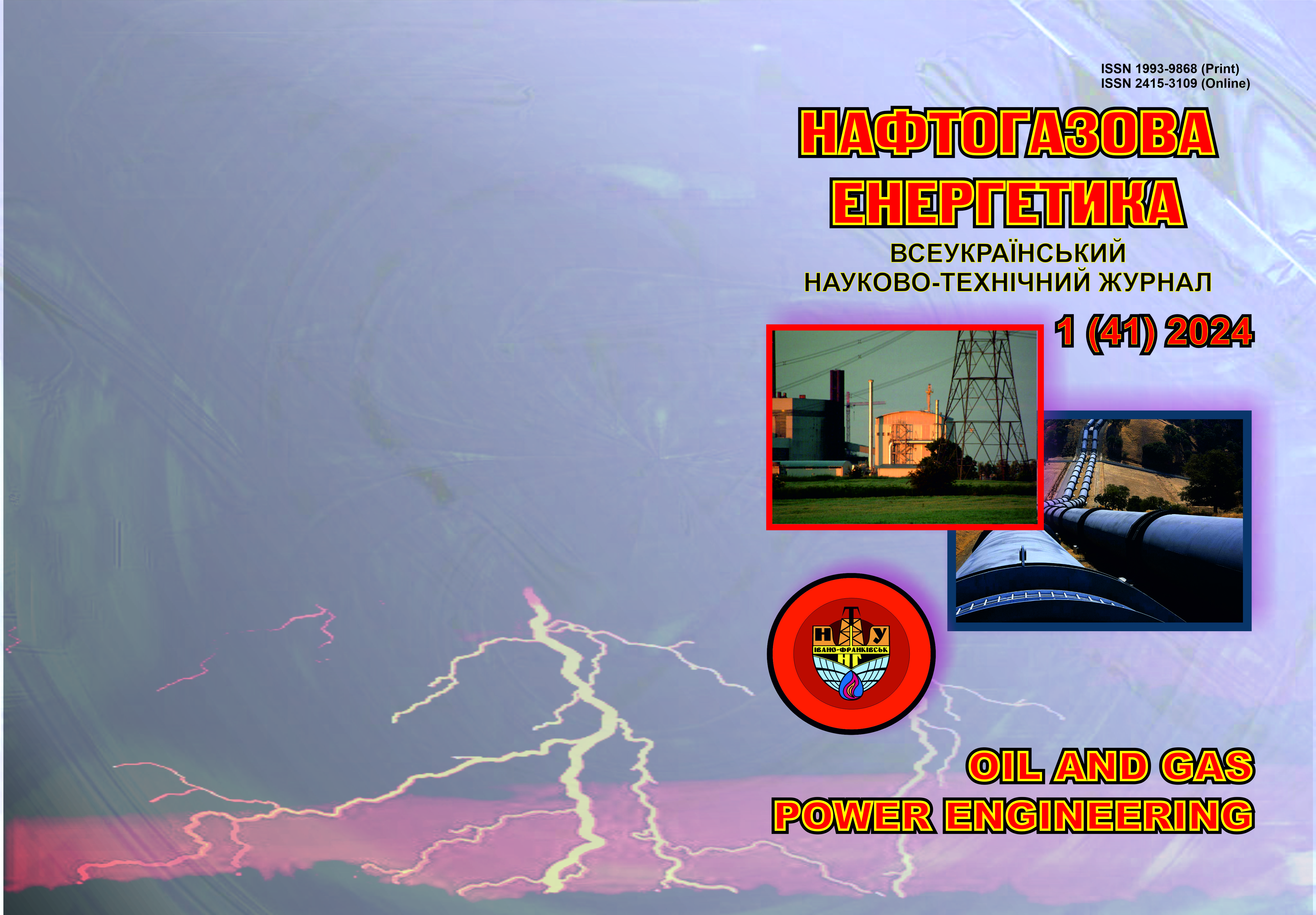ESTIMATED GAS CONSUMPTION IN GAS DISTRIBUTION NETWORKS
DOI:
https://doi.org/10.31471/1993-9868-2024-1(41)-52-61Keywords:
gas distribution networks, low, medium and high pressure, gas dynamic calculation, transit flow rate, road flow rate, calculated gas flow rate, turbulent regime, coefficient of hydraulic resistance, Hofer's formulaAbstract
The purpose of the work is to improve the method of gas-dynamic calculation of gas distribution networks that supply gas to domestic consumers, when applying a mathematical model of uniform and continuous gas se-lection. Based on the results of theoretical studies using Leibenzon's generalized mathematical model, a refined formula was obtained for the estimated gas flow constant along the length, which ensures the pressure losses that occur during the actual variable flow along the length in low, medium and high pressure gas distribution networks. Analytical expressions were found for the coefficients of the Leibenzone model in the case of applying the Hofer formula for the coefficient of hydraulic resistance in the turbulent regime. The regularities of the influence of the gas flow regime, characterized by the Reynolds criterion, and the ratio of transit and route gas flow rates on the gas pipeline section of all working pressure categories on the degree of refinement of the calculated gas flow rate when applying the refined formula instead of the simplified one have been established. It has been established that the main factor affecting the estimated flow rate of the gas pipeline is the ratio of transit and route gas flow. The degree of clarification of the amount of calculated gas consumption in the case of applying the proposed method in gas dynamic calculations of gas distribution networks of low and medium pressure is estimated. It was established that the maximum refinement of the calculated gas flow rate of 15 % corresponds to dead-end areas for which the transit gas flow rate is zero. For the ratio of transit and road costs greater than one, the difference between calculations based on the simplified and refined formulas decreases to (1-2) %.
Downloads
References
Brkic D. Two efficient methods for gas distributive net work calculation. 23rd International Conferenceon Efficiency, Cost, Optimization, Simulation and Environmental Impact of Energy System. 2011. Vol. 29. P. 366. URL: https://www.researchgate.net/publication/279777308_A_Gas_Distribution_Network_Hydraulic_Problem_from_Practice_vol_29_pg_366_2011 (дата звертання 14.04.2024).
Yongan Y., Juntao Y., Jingyi L., Jiajia L. Analysis on hydraulic adaptability and pressure drop factors of low-pressure pipe network in coal-bed methane field.Article Advances in Mechanical Engineering. 2017. Vol. 9(2). P. 1–11. DOI: 10.1177/1687814017693947. URL: http://journals.sagepub.com/home/ade.
Bruce E. Larock, Roland W. Jeppson, Gary Z. Wstters. Hydraulics of Systems. CRC Press. Boca Raton. London. New York. Washington, D.C. 2000. 533 p. URL: https://doi.org/10.1201/9780367802431 (дата звертання 14.04.2024).
Alesmaeel M., Alfarsi A., Almusa S., Diaz E., Grigoryan S., Queda J., Zirakian T., Boyajian D. Analysis of a Hydraulic Pipe System with Major andMinor Pressure Losses. Journal of Civil Engineeringand Architecture. 2019. No 13. P. 209-217. DOI: 10.17265/1934-7359/2019.03.006
Salmasi F., Khatibi R., Ghorbani M. A. A study of friction factor formulation in pipes using artificial intelligence techniques and explicit equations. Turkish J. Eng. Env. Sci.2012. No 36. P. 121–138. DOI: 10.3906/muh-1008-30. URL: https://aj.tubitak.gov.tr/engineering/issues/muh-12-36-2/muh-36-2-3-1008-30.pdf (дата звер-тання 14.04.2024).
Yetilmezsoy K., Bahramian M., Kıyan E., Bahramian M.. Development of a New Practical Formula for Pipe-Sizing Problems within the Framework of a Hybrid Computational Strategy. Journal of Irrigation and Drainage Engineering. Vol. 147. No 5. URL: https://ascelibrary.org/doi/abs/10.1061/%28ASCE%29IR.1943-4774.0001556 (дата звертання 14.04.2024).
Seredyuk M. D. Rozrahunok koefitsienta gidravlichnogo oporu v gazovih merezhah naselenih punktiv. Mizhnarodniy naukoviy zhurnal «Internauka». 2022. No 8 (127). P. 51-60. DOI: 10.25313/2520-2057-2022-8-8156 [inUkrainian]
Seredyuk M. D., Velikiy S. V. Analiz metodiv viznachennya gazodinamichnoyi energovitrat-nostI gazovih merezh naselenih punktiv. Naftogazova energetika, 2022. No 2(38). P. 51–61. DOI: 10.31471/1993-9868-2022-2(38)-51-61 [in Ukrainian]
DBN V.2.5-20:2018. Hazopostachannia. [Chynnyi vid 2019-07-01]. Vyd. ofits. Kyiv: Minhehion Ukrainy, 2019. 113 p. [in Ukrainian]
Goncharuk M. I., Seredyuk M. D., Sheludchenko V. I. Dovidnyk z gazopostachannya naselenykh punktiv Ukrainy. Ivano-Frankivsk: Simik, 2006. 1313 p. [in Ukrainian]
Seredyuk M. D. Proektuvannya ta eksplu-atatsiia gazovykh merezh: navch. posib. Ivano-Frankivsk: IFNTUNG, 2022. 144 p. [in Ukrainian].
Downloads
Published
How to Cite
Issue
Section
License
Copyright (c) 2024 Oil and Gas Power Engineering

This work is licensed under a Creative Commons Attribution-ShareAlike 4.0 International License.


.png)






1.png)









